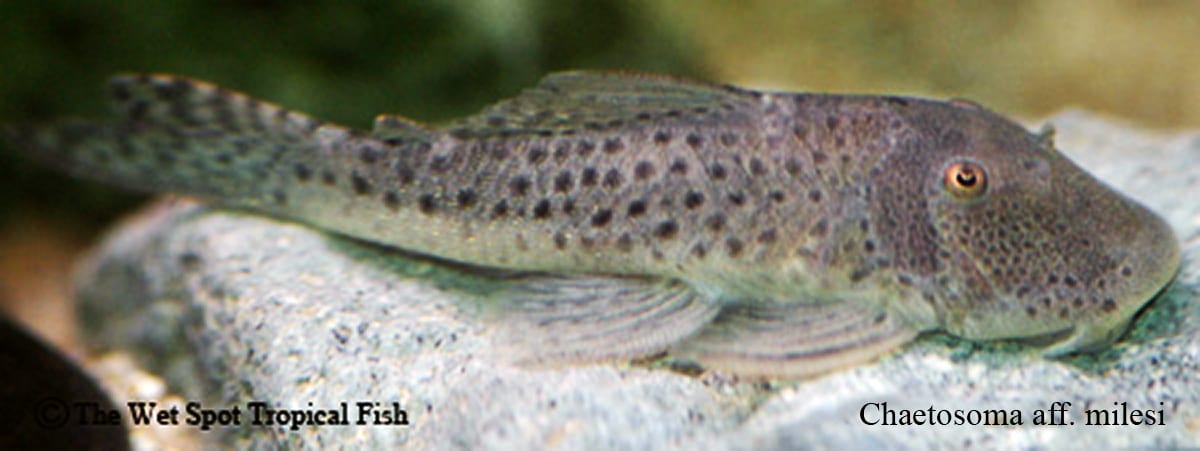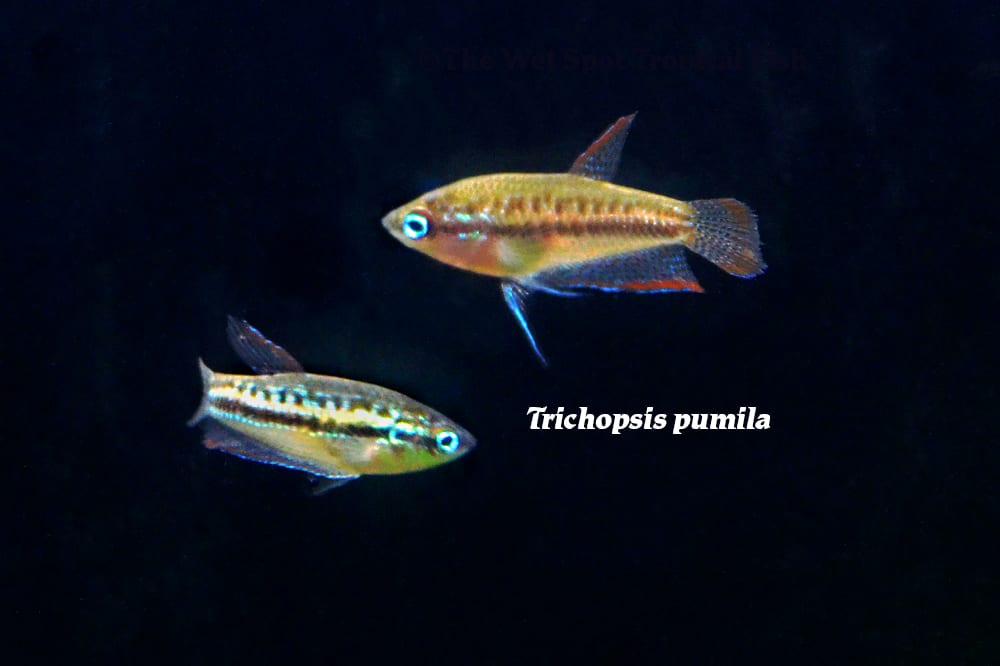Celestial Swimmers
Celestial Swimmers
Since the first man looked to the night sky, we’ve dreamed of traveling among the stars and exploring this final frontier. We shan’t forget, however, that there’s still so much wonder and exploration to be done by looking down. Just below the surface water, exist countless unique and beautiful organisms, each with their own version of what life is all about. This week, we explore some magnificent starry swimmers…no, not that kind of starfish, but rather freshwater fish that would fit right in on the USS Discovery. Focus your telescopes on: Hypancistrus sp. “L262″, Chaetostoma aff. milesi, and Trichopsis pumila.
Scientific NameHypancistrus sp. “L262”
Common NameStardust Pleco
Temperature / pH73 to 80°F / 5.5 to 7.0 pH
Native LocationRio Tapajos
Preferred DietSmall invertebrates
Found in the lower Amazon, Rio Tapajos, Hypancistrus sp. “L262″, explores the rocky bottoms of their clearwater habitat. Reaching about 4 inches in length, they are dark with numerous, densely-clustered white spots, earning them the common name of “Stardust Plecos”. These Plecos thrive in biotope setups that resemble flowing streams with sandy substrate, variable-sized water-worn rocks, driftwood, and several crannies formed from rocks, slate plates, bamboo sheet, or PVC pipe. Sensitive to organic pollutants, these swimmers require high-levels of oxygenation, some water flow, and weekly water changes of at least 30%. Generally peaceful, Stardust Plecos can be kept with any number of suitable tank mates so long as they do not compete for bottom space. They do best alongside tetras and similar small, quiet fish. Like others of their genus, these plecos have reduced numbers of teeth, and rely more on invertebrates and other meaty foods rather than algae scraping. In captivity they readily eat high-quality discus food, bloodworm, brine, and the occasional algae or spirulina wafer. Tank waters should be maintained with temperatures of 73 to 80°F, pH between 5.5 and 7.0, and hardness of 18-268 ppm.
Scientific NameChaetostoma sp. aff. milesi
Common NameSpotted Rubberlip Pleco
Temperature / pH68 to 73°F / 6.8 to 7.8 pH
Native LocationColombia
Preferred DietOmnivorous
Another spotted pleco, Chaetostoma aff. milesi hails from the Magdalena and Apure River basins of western Colombia. Also known as “Spotted Rubber Lip Pleco”, this lovely, small, algae-eating specimen is a joy to keep in the trade. Exhibiting oversized lips, they spend most of their time comically suctioned to tank glass. Reaching a maximum of 7 inches in length, they are light in color with dark spots like mini black holes. Aquariums mimicking their natural setup are preferred, equipped with sandy substrate, smooth pebbles, rocks, shady nooks and crannies, and a powerhead to maintain water flow and oxygenation. Peaceful by nature, they can be kept with any species that does well in the same habitat ranges. Suitable options include characins, loricariids, and several cyprinids. Omnivorous by nature, they do consume large amounts of algae, however, they should not be expected to thrive on tank algae alone. Diets should be comprised of blanched spinach or other prepared vegetal items, algae wafers, and supplemental live and frozen offerings like bloodworm. Tank waters are best maintained with temperatures between 68 and 73°F, pH of 6.8 to 7.8, and hardness between 57 and 178 ppm.
Scientific NameTrichopsis pumila
Common NameSparkling Gourami
Temperature / pH71 to 82°F / 5.0 to 7.5 pH
Native LocationMekong River
Preferred DietSmall invertebrates
Sparkling like the Milky Way itself is T. pumila. More commonly known as “Sparkling Gouramis”, they reach about 1.5 inches in length and exhibit light bodies dotted with black and shimmering silver spots, and red-tipped fins. Found in all types of slow-moving habitats within the Mekong River basin of Southeast Asia, this species is quite resilient, but prefers still waters with dense riparian or aquatic vegetation. Tanks should be densely planted including floating plants to provide ample shade. Furnishings can include but are not limited to driftwood, clay pots, PVC piping, and rock caves. Dried leaf litter provides setting ripe for breeding, full of tannins, and offers a primary food source for fry. Mostly diminutive by nature, these Gouramis are best maintained as pairs or in small groups alongside small and less vigorous species unlikely to outcompete. Prime options for tank mates include loaches or small, schooling cyprinids. Feeding primarily on insects and small invertebrates in the wild, in captivity they should be fed regular live and frozen meals like Daphnia, Artemia, bloodworm, or brine, and can be taught to accept high-quality dried foods. Optimal water conditions include temperatures of 71 to 82°F, pH of 5.0 to 7.5, and hardness between 18 and 215 ppm.
As the great Carl Sagan once said, “We’re made of star stuff. We are a way for the cosmos to know itself.” Some organisms resemble this heritage more closely than others. Observing these astral water dwellers in our tanks serves as an important reminder in these times, of the fundamental similarities between everything and everyone in the universe. Whether you’re in need of these philosophical musings as we head into the new year, or simply want a beautiful new fish for your tank, The Wet Spot has got you covered.


